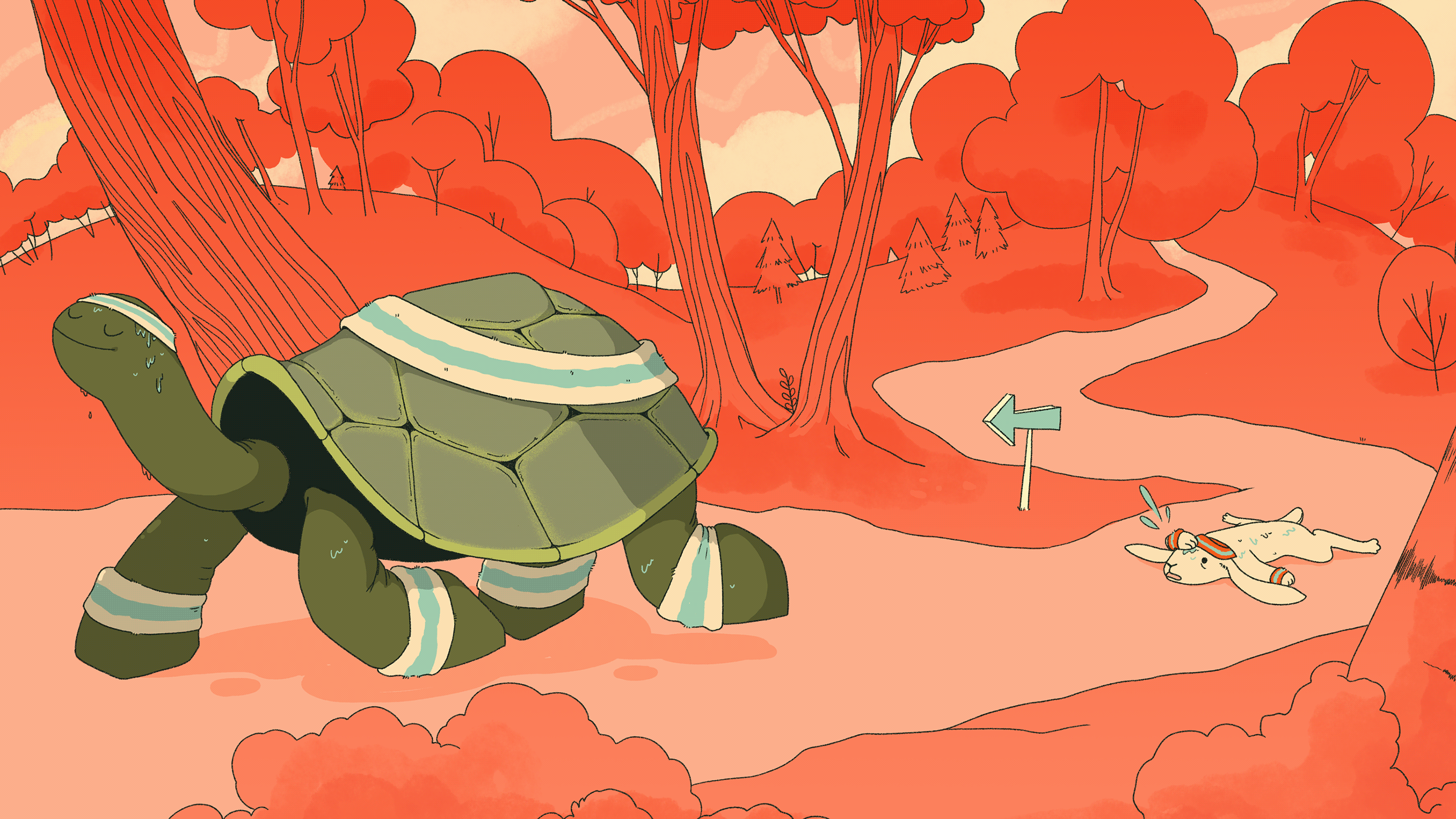You Need to Run Slower

If running is hard, this is for you—especially if you’re a new runner, or if you’ve been running for a while but you just can’t seem to get any faster. The most important thing you need to learn is this: you get faster by running more, and you run more by running slower.
Everybody starts out too fast. You’re not alone. This was me once: running three miles every time I went out, always hoping to beat my time from the previous run. Never actually beating it.
When you start, you have two speeds. Running is fast; walking is slow. So once you are “running” all the time (you’ve hit the end of your couch-to-5K program, let’s say), you are running fast all the time.
If that’s the case, you have done well and you have come far. Now you have one further mission: slow the fuck down.
How should a normal run feel?
A normal training run should feel easy. Yes, you may want to be a fast runner, but there is a difference between a training run and a race.
Training runs are easy, slow, leisurely; races are fast, hard, sweaty, difficult, miserable. Races are hard on your body and are only to be done on rare occasions, when you are ready for them. Not every day.
I blame couch to 5K for a bit of this confusion. “A 5K” is a race distance. If your fast runner friend says they ran a 25-minute 5K, that is a race that they trained and peaked for. They did not run their daily runs, even if they were a distance of five kilometers (3.1 miles), at that pace. Probably their three-mile training runs were 30 minutes or more.
On reddit I often see people asking about how to run farther. They say they keep trying, but they can’t get past a certain distance (like two or three miles). If this is your problem, you are definitely running too fast. You should not be going at a pace that poops you out that quickly. By the end of a 30-minute easy run, you should be stopping because time is up, not because your body is giving out on you.
Wait, training runs are never fast?
Occasionally you may do a fast run in training, but that’s not your bread and butter.
Take a look at any training program for experienced runners. There might be a speedwork day (alternating short fast intervals with some nice easy recovery) or a tempo run (a run at a steady, somewhat grueling pace), but everything else is meant to be easy mileage. That means at least 80% to 90% of the runs are meant to be at a pace that’s almost as leisurely as going for a walk. For programs at the beginner level, that pace may be 100% of your mileage.
The easy runs are building up your fitness. They don’t have to be hard to do their job. Slow runs are easy to do and easy for your body to recover from. You shouldn’t max out your deadlift every time you hit the weight room, and you shouldn’t run a race every time you lace up your shoes.
Okay, how slow is slow enough?
There are a couple ways you can measure this. The classic is: could you hold a casual conversation while running? If you can’t speak in full sentences, you’re probably running too fast.
Are you worried about keeping up with your training partner? Constantly picking someone ahead of you and pushing the pace so you catch up with them? Too fast. You don’t want a pace that you have to push yourself to keep. You want a pace that feels like you could keep it up forever.
A pace that you could hold for about an hour before pooping out is your tempo pace and you need to save that for tempo workouts. That means an easy run pace is one you could keep up indefinitely.
Can you look around and enjoy the sunshine or the scenery? Good.
Are you breathing heavy and looking forward to the end or to your next water break? Too fast.
Are power-walkers passing you? Believe it or not, that’s a good sign. It means you’ve managed to slow the fuck down.
But I can’t run that slow!
There are two things I want to say to you.
First, yes you can. I recommend a little exercise to figure this out. You’re going to alternate running medium speed for one minute, and then slow for one minute. (Instead of checking your watch, you can run medium speed on the straightaway of a track, and slow on the curves. Or use city blocks or telephone poles. Anything that’s spaced relatively close together will do.)
In time, you’ll realize that even when you’re running “normal” speed, you have a speed that is slower than that. It may feel maddeningly slow. Remember, if a walker passes you, that’s a sign you are starting to figure it out. If you can’t find the right pace, try keeping the same cadence but shortening your stride. Baby steps. Literal baby steps.
Second, if you tried the above and still can’t run slow enough, then take walking breaks as needed. Keep your overall effort level to one where you could carry on a conversation. When you notice yourself losing your breath, walk. Forget your speed and aim to keep your effort level easy.
You are learning to be a better runner
Almost everybody goes through this process. I remember the day during a couch-to-5k style program when I decided to see if I slowed down a bit, if I could skip the walk breaks. It worked, but it was still years after that before I figured out how to do all my runs at a slow enough pace that I didn’t feel like I was dying. I ran my first 10K race in a series of sprint/walk intervals. But it still counted! I still covered the distance.
The slower you run, the sooner you’ll figure out the difference between easy and fast runs, and the sooner you’ll make progress in adding mileage and getting faster. It really is a counterintuitive process, but it pays off. On easy days, you really cannot run too slow. Keep it up, and soon you’ll be able to run your actual races faster.
The post You Need to Run Slower appeared first on Life Hacker.

